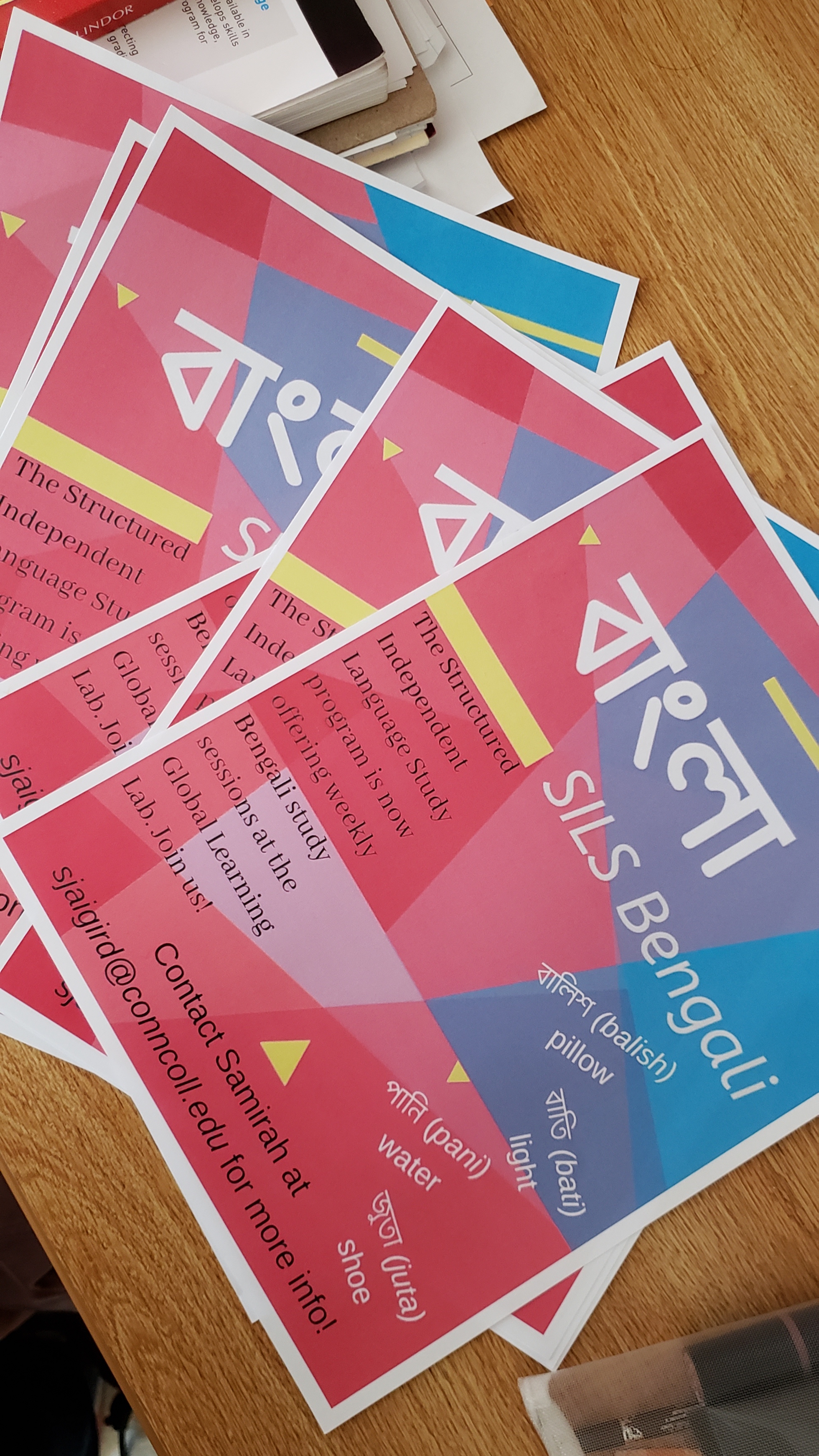
Growing up bilingual, I don’t remember learning to speak either English or Bengali. I don’t know if I learned the alphabet first or how I knew to tell the difference between the words for a lamp and a lightbulb or how the two languages differed phonetically from one another. I don’t know how I learned and I could surely not advise someone trying to acquire a new language.
That is why, when I was asked if I would teach Bengali as part of Conn’s Structured Independent Language Study Program (SILS), I initially turned down the opportunity. The program hires Conn students to teach their native language to anyone from the community who is interested. I didn’t know how I would even start teaching Bengali. Would I start with basic greetings? The alphabet? The numbers? How to say “I want food”? I think I spent 15 minutes pouring out my worries to Laura Little, director of the Global Learning Lab, who then had to spend an additional 15 minutes explaining that I wasn’t the only student to have doubts about their language teaching abilities (or lack thereof). She convinced me to take on this challenge and see how I progressed during the spring semester.
Spurred by professor Little’s enthusiasm, I started by making posters and spreading the word among my friends. Before I knew it, I had four people who were interested. The night before my first lesson, at a loss, I found myself Googling “How to Teach a Language.” I didn’t know how I was going to explain that there were no gender pronouns or a specific way to say “Please” in Bengali. I opted for the safest plan: teaching my new students how to say their names and ask how someone’s day has been.
Three classes in, I still feel as though I don’t know how to teach a language, but I’m making progress. I do, however, know the sense of thrill and pride that comes when one of my students asks me how my day has been in Bengali.